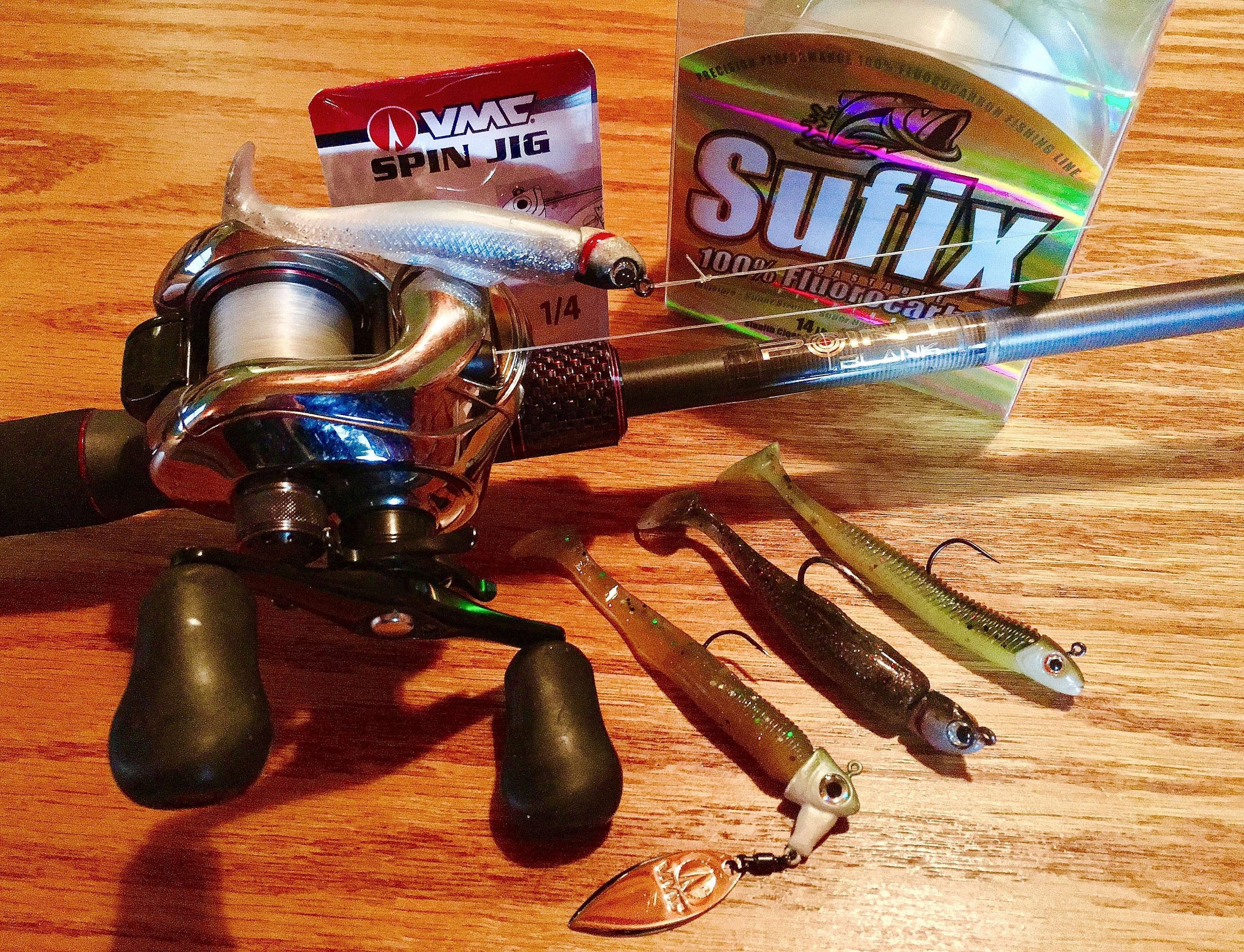
When the swimbait revolution began in the late 1980s, the trend moved quickly toward larger profile bodies with exaggerated swimming actions. The belief was that bigger baits that swam hard would catch bigger bass, and that’s true … sometimes.
But not always.
Lately, the trend seems to be less is best. More and more touring pros are leaning toward smaller profile swimbaits — for all species of black bass, regardless of size.
From Florida to Ontario, California to the Carolinas, hardcore anglers have discovered they can rely on smaller swimbaits, especially when the bite gets tough.
In the Mix
Among today’s more popular brands are Keitech, Storm and Yamamoto. You’ll find variations of these in nearly every touring pro’s tackle selection.
Why? Because they work!
Whether we’re dealing with passing cold fronts or heavily pressured fish, when the bite gets tough, smaller profile swimbaits can still trigger fish to strike. It’s the same principle that works with other lures: A smaller profile combined with a subtler swimming action can often make the difference between getting a bite or not.
Whether I’m fishing in my home state of Florida or traveling to the Great Lakes, you can bet I’ll have a broad selection of smaller swimmers with me. So long as the water I’m fishing has good clarity, I know there’s a strong chance they’ll work.
It’s true for lakes, rivers and manmade impoundments, too. Whether a body of water features wood or grass or is virtually barren of cover, swimbaits work. They can draw fish from dense cover or a bare bank, provided the water has reasonable clarity.

Rigging
When grass or brush are abundant and I want the lure to make contact with cover, I’ll rig my swimbaits either Tex-posed with a tiny bullet-type tungsten weight or with a weighted, offset wide-gap rigging hook. If I plan on keeping the bait out of the cover, I’ll opt for a jighead with an exposed hook.
Regardless of which rigging style I choose, weights normally range from 1/16- to 3/8-ounce. Remember, we’re talking small swimmers here.
Brands like Storm and Hildebrandt offer pre-rigged, jig-style swimbaits. The new Storm 360GT features a rattling sound chamber inside its jighead. Hildebrandt’s Drum Roller is silent and molded with pure tin (rather than lead), which makes it ideal for super-shallow applications. To determine whether the fish want noise or not in a specific situation, you’ll have to experiment with both.
In shallow grass or flooded brush — places where enhanced sound might help —my approach is to fan cast over the target area and retrieve the lure cleanly above the cover so it makes only occasional contact. Just like a spinnerbait, bladed jig or crankbait, intermittent contact with the cover can provoke bass to strike. But for a swimbait to be effective, it must be fairly weedless.
When I’m fishing a bare bank or in open water — like over shallow shoals or sandy flats — I’m keeping the bait high in the water column, retrieving at a brisk pace. I want to make the fish come to the lure.
Bass feeding in open water are more likely to chase than those hiding in dense cover. Even so, you don’t want to give them too much time to study the bait. If they see it and it looks like it’s trying to escape, they’ll usually charge up and grab it. That’s true for all species of bass, but especially spots and smallmouth.
About the only time I slow the retrieve is when the fish are deep or the water is cold. In these situations I may rig the bait on a jighead with a spinner, such as a VMC Spin Jig — a combo that’s also great for schooling fish.
Swimbait Summary
To throw smaller swimbaits, I suggest a medium action, 6 1/2- to 7-foot, high-modulus graphite rod. A rod of that length will allow you to make long casts without any compromise in accuracy. Either spinning or baitcasting gear is fine.
I spool my reels with fluorocarbon or monofilament line — something with minimal stretch, usually in 12- to 15-pound test. The heavier line is for thicker cover and/or larger fish. It’s also better when trying to drive the hook at the end of a long cast. Use the heaviest pound rating you can get away with.
My color selection is pretty basic. I rely on patterns that best represent live forage, like combinations of silver, gold, blue and green — all in translucent finishes. The only exception is when I’m targeting aggressive smallmouths or spots. Then I may throw something gaudy, like chartreuse, hot orange or pink.
That’s pretty much it. Just follow these basic guidelines and cover water and I bet you’ll not only catch more fish, you’ll be able to do it behind other anglers!

